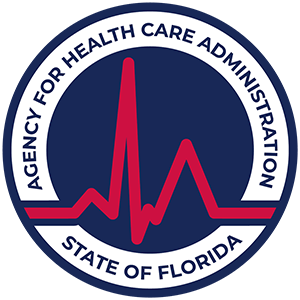Effects of Drug & Alcohol Use During Pregnancy
Discover the effects of drug & alcohol use during pregnancy and their impact on mother and baby’s health.

Substance Use During Pregnancy
Understanding the implications of substance use during pregnancy is crucial for ensuring the health and safety of both the pregnant individual and the developing fetus. The following sections explore identification guidelines and the impact of substance use on pregnancy.
Identification Guidelines
The identification of substance use in pregnant individuals is essential. The World Health Organization provides guidelines that aim to help healthcare providers recognize and manage substance use disorders in pregnant women. These recommendations focus on creating favorable outcomes for both the expectant mothers and their unborn children.
Common identifiers of substance use during pregnancy may include:
Healthcare providers are encouraged to conduct regular screenings and maintain open lines of communication to assess substance use and support pregnant individuals in accessing necessary care.
Substance Use Impact on Pregnancy
Substance use and Substance Use Disorder (SUD) during pregnancy can lead to severe complications and health issues. According to the NCBI Bookshelf, the effects on both maternal and fetal health can include:
ComplicationsDescriptionStillbirthThe loss of the fetus at or after 20 weeks of pregnancy.Fetal growth restrictionInadequate growth of the fetus, leading to health issues.Decreased birth weightBirth weight less than 5.5 pounds, increasing health risks.PrematurityBirth that occurs before 37 weeks of gestation.Sudden unexplained infant deathThe unexpected death of an infant, often during sleep.Fetal Alcohol Spectrum DisordersA range of effects in the child due to prenatal alcohol exposure.Congenital malformationsBirth defects affecting the structure of the body.Neonatal opioid withdrawal syndromeWithdrawal symptoms in newborns due to maternal opioid use.
Substance use during pregnancy is particularly concerning with tobacco, alcohol, marijuana, cocaine, amphetamines, and opioids, as they have varying adverse effects on both maternal and fetal health. For instance, tobacco use significantly increases the risk of stillbirth, while alcohol consumption can lead to fetal alcohol syndrome, characterized by growth deficiencies and cognitive impairments.
Pregnant individuals are encouraged to recognize the serious implications of substance use and seek support. For additional resources on recovery and mental health during pregnancy, see our articles on the importance of celebrating milestones in recovery and ways to take care of your mental health.
Effects of Alcohol Use
Alcohol consumption during pregnancy poses considerable risks to both the pregnant individual and the developing fetus. Understanding the potential consequences is crucial for informed decision-making.
Risks of Alcohol Consumption
Alcohol use during pregnancy is linked to a range of serious complications. It can lead to an increased risk of miscarriage, preterm birth, stillbirth, and sudden infant death syndrome (SIDS) [1]. Additionally, alcohol can severely impact the baby's development as it passes through the placenta to the fetus; this exposure can adversely affect the brain, which is still developing throughout pregnancy.
The following table summarizes key risks associated with alcohol consumption during pregnancy:
Risk FactorDescriptionMiscarriageIncreased likelihood of losing the pregnancyPreterm BirthHigher chances of delivering before full termStillbirthIncreased risk of fetal death after 20 weeksSIDSIncreased risk of sudden infant death in infants
There is no safe time for alcohol use during pregnancy; issues may arise at any stage, even before the pregnancy is detected. For example, exposure during the first trimester may lead to noticeable facial abnormalities in newborns.
Stopping alcohol use at any point during pregnancy can enhance the baby's health, as brain growth continues throughout the entire duration of the pregnancy. Thus discontinuation at any stage is beneficial.
Fetal Alcohol Spectrum Disorders
Fetal Alcohol Spectrum Disorders (FASDs) encompass a broad range of lifelong disabilities that arise from alcohol exposure during pregnancy [1]. These disorders can lead to behavioral, intellectual, and physical disabilities that affect the individual for life.
Fetal Alcohol Syndrome (FAS) is the most severe form of FASDs and is characterized by:
No amount of alcohol is considered safe during pregnancy. FAS is recognized as the leading cause of preventable intellectual disability in the United States. Data indicates that approximately 13.5% of pregnant women have consumed alcohol in the month prior, highlighting the prevalence of this risk. Awareness and education regarding the effects of drug & alcohol use during pregnancy are essential for preventing these serious outcomes.
Effects of Drug Use
Substance use during pregnancy presents significant risks, affecting both the mother and the developing fetus. Understanding these risks is crucial for individuals grappling with addiction.
Risks of Drug Consumption
Using drugs during pregnancy can lead to severe complications, including fetal growth restriction, decreased birth weight, and prematurity. Additionally, substance use can increase the risk of stillbirth and sudden unexplained infant death. Almost all drugs are capable of crossing the placenta, which means that any drug use can potentially affect the fetus adversely. Here’s a summary of some common risks associated with various substances:
Substance TypeRisksOpioidsNeonatal Opioid Withdrawal Syndrome (NOWS), complications ranging from low birth weight to premature birthAlcoholFetal Alcohol Spectrum Disorders (FASD), growth deficiencies, cognitive impairmentsTobaccoPreterm birth, low birth weight, respiratory issues in the newbornIllicit DrugsCongenital malformations, developmental delays
The type and severity of any withdrawal symptoms an infant may experience are influenced by the drug(s) used, the frequency and duration of use, and individual metabolic factors.
Neonatal Abstinence Syndrome
Neonatal Abstinence Syndrome (NAS), also known as Neonatal Opioid Withdrawal Syndrome (NOWS), occurs when a newborn is exposed to drugs, particularly opioids, while in utero. This syndrome manifests through withdrawal symptoms in the infant after birth. Symptoms can include irritability, feeding difficulties, tremors, and seizures.
The onset and severity of NAS are contingent on various factors:
Effective management of NAS may involve treating the infant with medications like morphine or methadone to alleviate withdrawal symptoms. Additionally, prenatal treatment with methadone or buprenorphine can help reduce the severity of withdrawal symptoms in the newborn [2].
For those affected by addiction during pregnancy, it is vital to seek support and communicate openly with healthcare providers. Understanding the risks associated with substance use can empower individuals to make informed choices for their health and the health of their child. For more information on managing addiction, consider exploring our resources on ways to take care of your mental health and importance of sleep during recovery.
Types of Substance Use
Understanding the various types of substance use during pregnancy is essential for recognizing their potential impacts and risks. This section outlines three primary categories: alcohol use, tobacco use, and illicit drug use.
Alcohol Use
Alcohol consumption during pregnancy poses significant risks to fetal development. It can affect the baby's brain, which is actively developing throughout the gestation period. Alcohol can be transmitted from the pregnant person to the fetus, leading to various complications. Studies indicate that there is no known safe amount of alcohol that can be consumed during pregnancy or while trying to become pregnant. Even drinking in the early months can result in abnormal facial features for the baby [1].
Timeframe of ExposurePotential RisksBefore PregnancyUnanticipated effects on fetal developmentFirst 3 MonthsRisk of abnormal facial featuresThroughout PregnancyContinuous brain development impairment
Stopping alcohol use at any stage of pregnancy can enhance the health and well-being of the baby [1].
Tobacco Use
Tobacco use, including smoking and vaping, during pregnancy is linked to significant health risks. It is associated with double or even triple the risk of stillbirth [3]. Furthermore, exposure to nicotine and other harmful substances in tobacco can lead to low birth weight and developmental issues for the child.
Risks of Tobacco Use
Risks AssociatedEffects on PregnancyLow birth weightIncreased health complications for the newbornPremature deliveryGreater risk of infant mortalityDevelopmental delaysLong-term challenges in learning and behavior
Illicit Drug Use
The use of illegal drugs during pregnancy carries severe implications for fetal health. Substances such as cocaine, heroin, and methamphetamine can lead to a condition known as Neonatal Abstinence Syndrome (NAS), where the newborn experiences withdrawal symptoms. This can manifest in irritability, feeding difficulties, and developmental delays.
Drug TypeAssociated RisksCocaineIncreased risk of miscarriage and preterm birthHeroinPossible NAS, low birth weight, and complicationsMethamphetamineLong-term cognitive and behavioral issues
The risks associated with illicit drug use during pregnancy highlight the critical need for intervention and support. Individuals facing addiction should be encouraged to seek help and utilize resources to promote healthier outcomes for themselves and their babies. It's essential to acknowledge the effects of drug & alcohol use during pregnancy and explore appropriate treatment options. For more information on addiction recovery, check our articles on the importance of celebrating milestones in recovery and 5 levels of care in rehab.
Legal Implications
Criminalization of Substance Use
The legal landscape surrounding substance use during pregnancy varies significantly across different states. In states like South Carolina and Alabama, laws allow for the criminal prosecution of pregnant women who use drugs, categorizing such actions as criminal child abuse. The Supreme Court of Alabama has ruled that a viable fetus is considered a "child" under the state's laws, which criminalizes the chemical endangerment of a child. This means that pregnant women can face severe legal consequences for substance use during pregnancy.
Tennessee also stands out for its legislative actions, having enacted laws that explicitly target drug use during pregnancy. Women found guilty of drug use while pregnant can face charges of aggravated assault, which could lead to prison sentences of up to 15 years. Such legal measures highlight the prevailing view in some states that substance use by pregnant women poses a significant risk to fetal health, warranting criminal consequences [4].
StateLegislation TypePotential ConsequencesSouth CarolinaCriminal Child AbuseProsecution for drug use during pregnancyAlabamaCriminalizes Chemical EndangermentViable fetus treated as a "child" under lawTennesseeAggravated AssaultUp to 15 years imprisonment for drug use during pregnancy
Legislative Measures
Legislative measures concerning substance use during pregnancy are becoming more prevalent as states seek to address the associated public health issues. In states with stringent laws, pregnant women using substances like methamphetamine often face criminal charges and the threat of legal repercussions. This trend reflects a broader movement toward holding expectant mothers accountable for their substance use, especially in cases where it may endanger the fetus [4].
While the intent behind such legislation may be to protect both the mother and the baby, critics argue that criminalizing substance use during pregnancy can deter women from seeking necessary healthcare or support. Efforts to address addiction should focus on treatment and education rather than punishment. Understanding the implications of existing laws is essential for individuals dealing with addiction as they navigate the complex intersection of health and legality during pregnancy.
For further insights into addiction recovery and health management, consider exploring resources like the importance of celebrating milestones in recovery and ways to take care of your mental health.
Coping Strategies
Navigating the complexities of substance use during pregnancy requires effective coping strategies. Recognizing the need for supportive measures can help reduce risks for both the mother and the developing fetus.
Strategies for Navigating Risks
Individuals facing the challenges of substance use during pregnancy often employ various strategies to manage their situation. Some common approaches include:
These strategies illustrate the struggles and fears associated with substance use during pregnancy. It is crucial to emphasize the importance of accessing proper healthcare and support to enhance well-being.
Honest Communication with Healthcare Providers
Open and honest communication with healthcare professionals can be an effective strategy for pregnant women who use substances. By being upfront about their substance use, some women aim to demonstrate their commitment to their child's health despite their challenges. This level of honesty can help foster a more supportive environment for treatment and care.
However, not all women find this approach beneficial. Some report that being candid with their providers damaged their relationships with medical staff and negatively impacted the quality of care they received. Moreover, it may have strained their bond with their child. The balance between transparency and potential consequences is a critical consideration for many.
Learning to communicate effectively with healthcare providers about substance use can make a significant difference. It can lead to better health outcomes and provide an opportunity for mothers to seek assistance in navigating their recovery journey. For more information on maintaining mental health during recovery, check out our article on ways to take care of your mental health.
References
[2]:
[3]:
[4]:














.svg)








